Explore the UK's coastline and learn to identify wild flowers with our expert guide to coastal flowers found in the UK.
1
Thrift
Also known as sea pink, thrift is usually found on cliffs but also on saltmarshes and sandy locations. The flowers form globular heads 15–25mm across. Flowers from April to July.
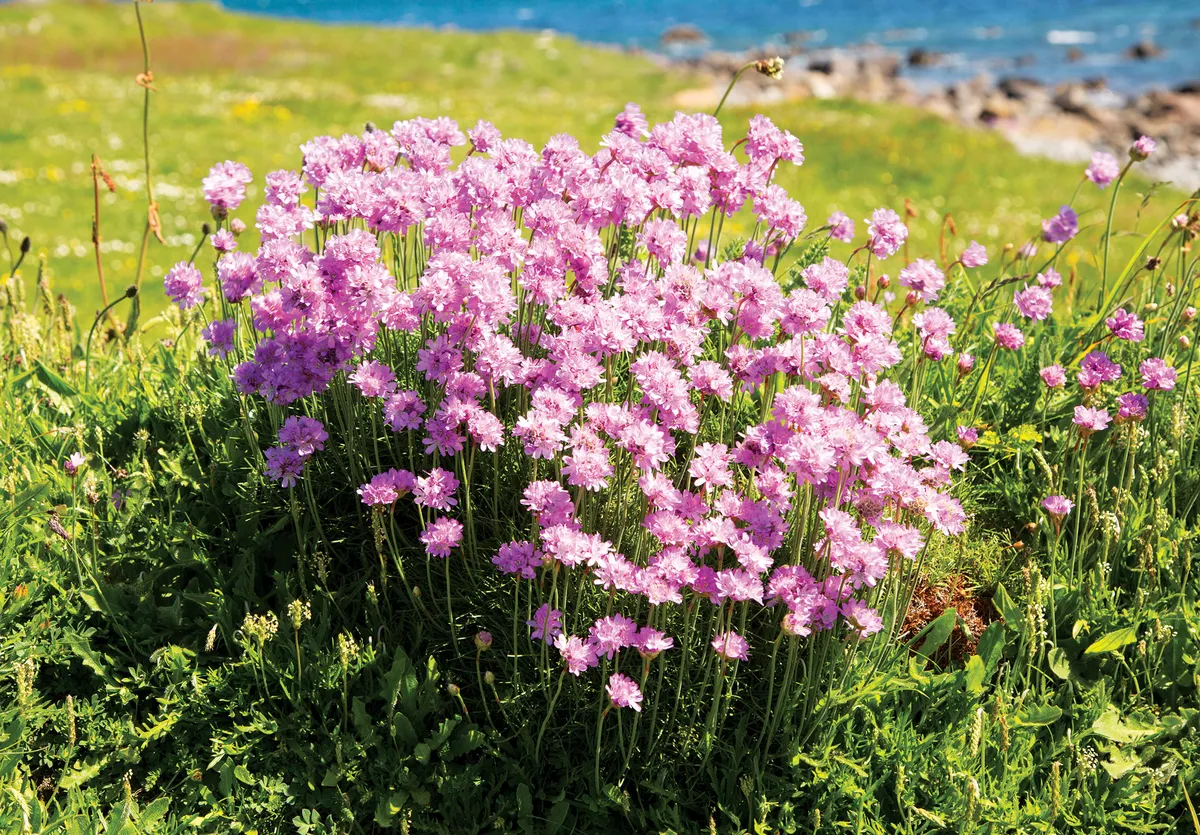
Where to see
Pretty clumps of thrift can be found all around the UK. Spot along coastal cliffs, shingle beaches, salt marshes and sand dunes.
2
Spring squill
Part of the asparagus family, and mainly found on the western and northern coasts of Britain. Blooms from March to August, with blue-violet flowers up to 15mm across.
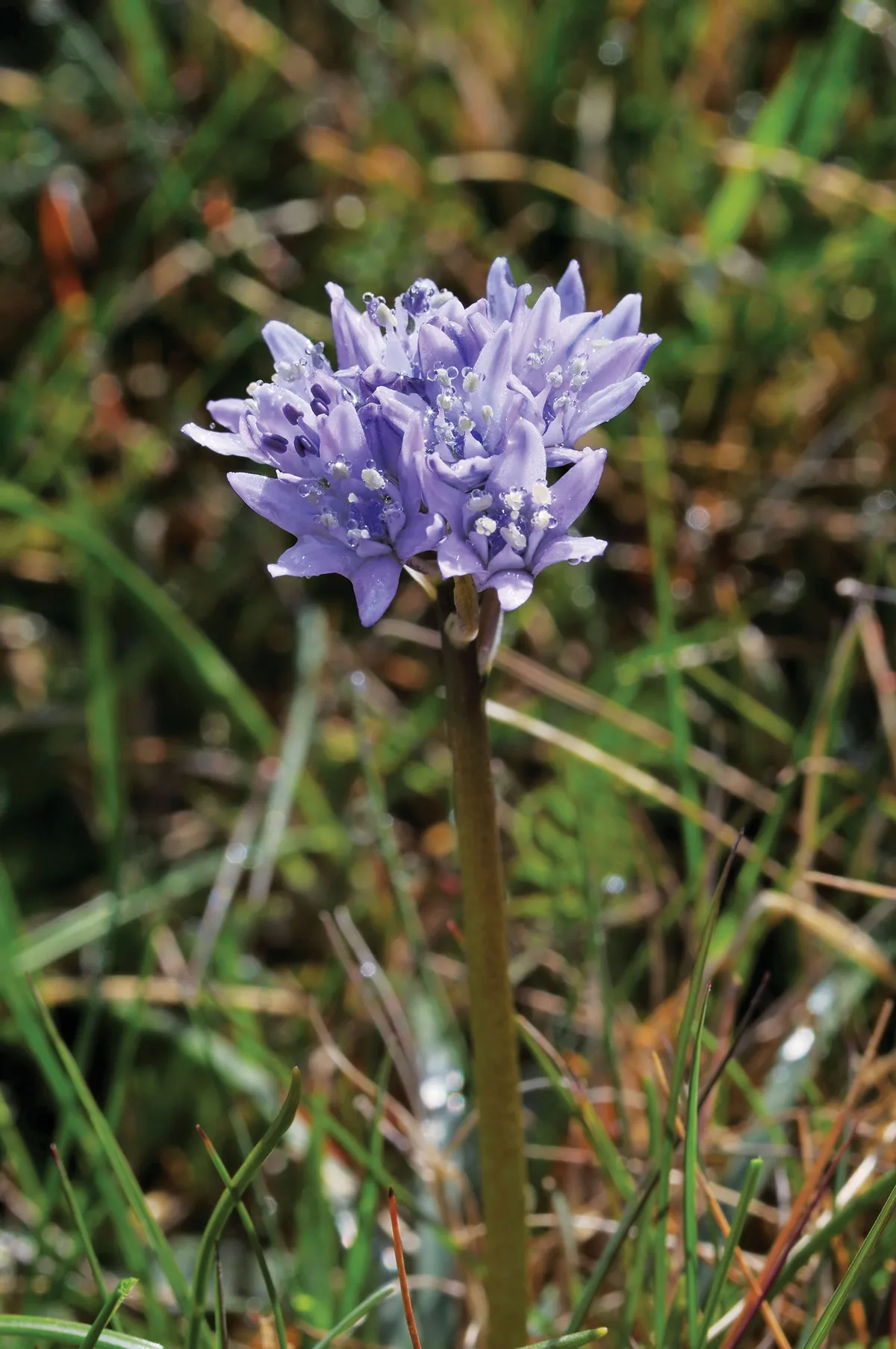
Where to see
Spring squill is found along the north and west coasts of the UK, the east coast of Scotland, the eastern coast of Ireland and coastal paths in West Wales. Found on coastal grassland.
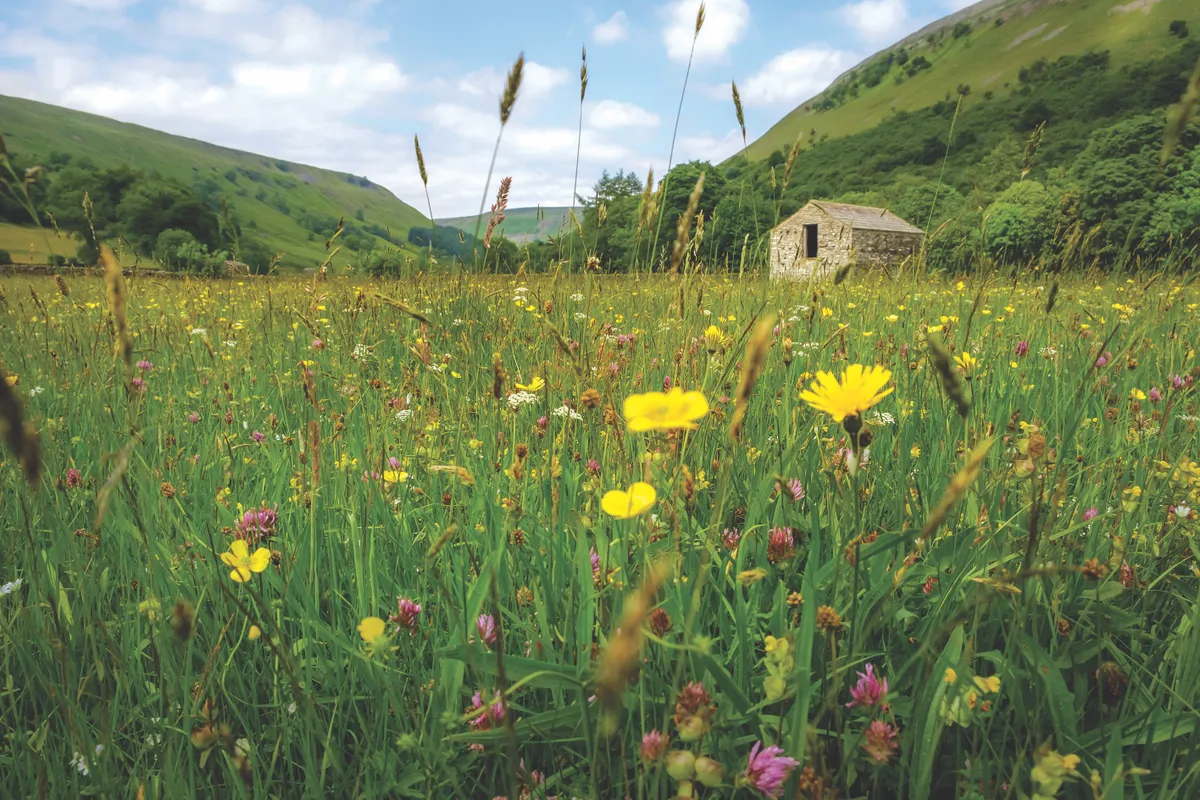
3
Sea campion
A widespread seaside plant with a distinctive veiny tube known as a calyx beneath the flower. It blooms between June and August, with white flowers 20–25mm across.

Where to see
Sea campion is found along most of the British coastline and some low-lying inland areas of north-west England and western Scotland on limestone habitats. Found on cliffs and amongst shingle.
4
Sea beet
The ancestor of beetroot and many other domesticated plants, sea beet is found in a variety of coastal habitats. The flowers are green and on spikes, and bloom from July to September.

Where to see
Sea beet is found throughout the UK coastline, except in northern Scotland. Found amongst shingle, bare ground, cliffs, sea-walls and in saltmarshes.
5
Sea holly
Despite the name, it’s not related to the holly we associate with Christmas. The blue flowers grow in globular heads up to 40mm across, and bloom between July and September.
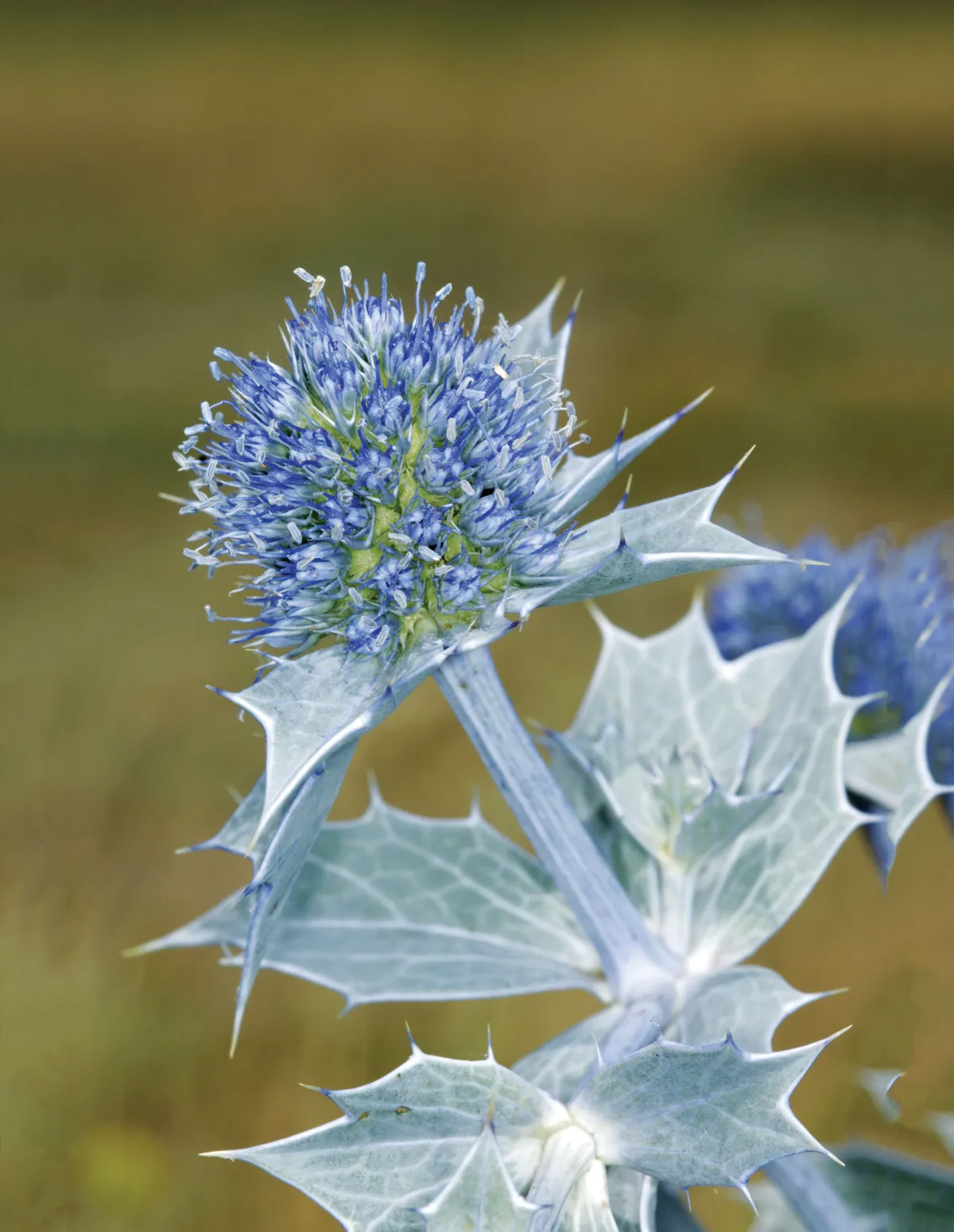
Where to see
Sea holly is found all over the English and Welsh coast but less common in Scotland and north-east England. Find it on on sandy shores and dunes.
6
Sea bindweed
A pink-and-white creeping plant of sand dunes and cliff tops, it’s common in coastal Britain. The pink or purple flower, up to 50mm across, is split by white stripes. Blooms June to August.
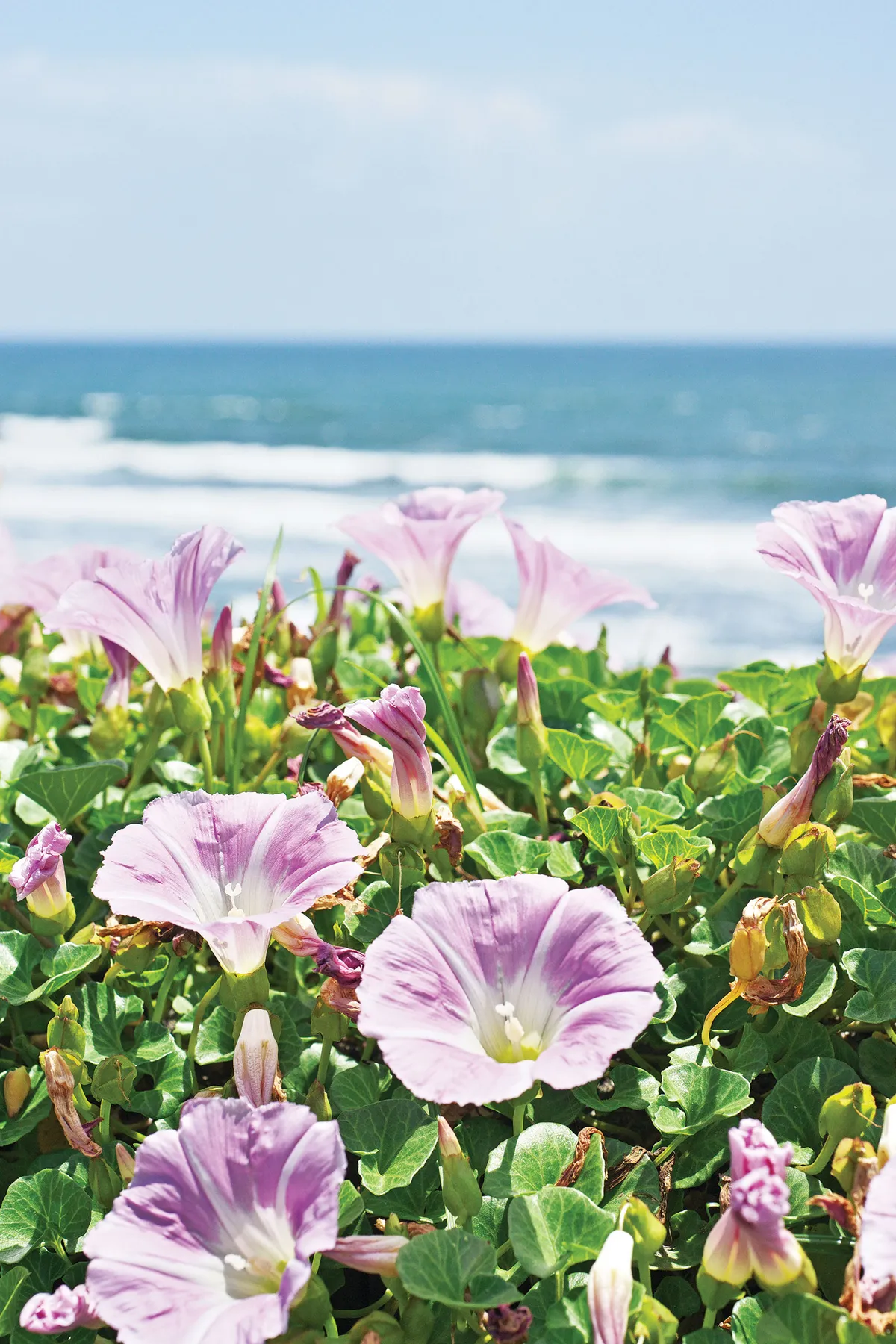
Where to see
Sea bindweed is found along the English, Welsh and eastern Ireland coastline but less common in Scotland. Find in sand dunes and on cliff tops.
7
Sea aster
Asters are also known as Michaelmas daisies. Common and usually found in saltmarshes, estuaries and on cliffs. It flowers from July to October, with purple flowers up to 20mm across.
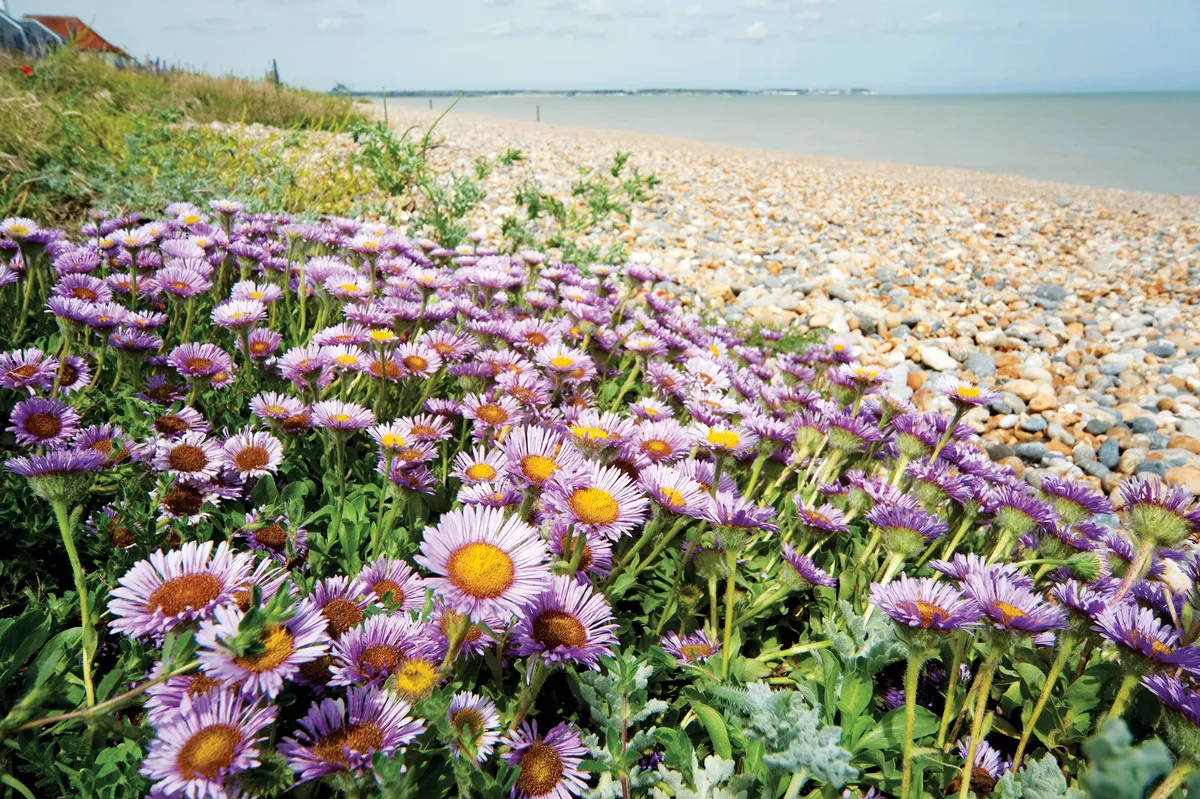
Where to see
Sea aster is found all along the UK coastline, but absent in parts of north-east of Scotland. Often found in saltmarshes, estuaries and sometimes on cliffs.
8
Golden samphire
Grows on sea cliffs and other rocky places, and drier saltmarshes in south-west Britain and Ireland. Its yellow flowers, up to 25mm across, bloom from July to September.

Where to see
Golden Samphire is found only in parts of East Anglia, the Southeast, South and Southwest of England and parts of southern Ireland. Found in saltmarshes and cliffs.
